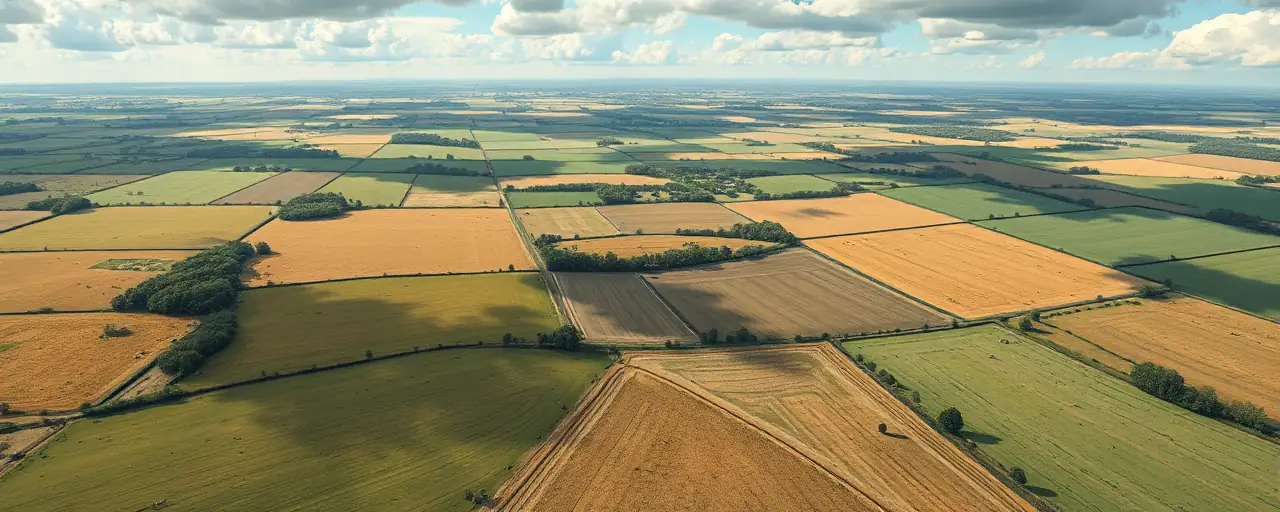A New Direction for Farm Funding
The U.S. Department of Agriculture unveiled sweeping changes to its grant programs this week, aiming to steer more federal dollars directly to farmers. Secretary Brooke Rollins announced the cancellation of the Partnerships for Climate-Smart Commodities, a Biden-era initiative, citing high administrative costs that left less than half of funds reaching producers in many cases. In its place, the USDA launched the Advancing Markets for Producers initiative, designed to prioritize farmers over intermediaries.
This pivot arrives at a time when American agriculture grapples with economic uncertainty, from volatile commodity prices to rising input costs. For farmers, the promise of streamlined support sounds appealing, but the abrupt shift has raised questions about the future of projects already underway. The decision reflects a broader effort to reshape federal agricultural policy, emphasizing efficiency and direct impact.
Yet, the overhaul isn't just about dollars and cents. It's a flashpoint in a larger conversation about what farming should achieve, whether it's feeding communities, protecting the environment, or driving economic growth. As the USDA retools its approach, the stakes are high for rural America, where every policy tweak ripples through fields and small towns.
Unpacking the Policy Shift
The Partnerships for Climate-Smart Commodities, launched in 2022, funneled billions into projects blending agriculture with environmental goals, like cutting greenhouse gas emissions through practices such as cover cropping. But critics, including some farmers, argued the program bogged them down with paperwork and vague objectives. The USDA's review found administrative fees eating up significant chunks of funding, prompting the decision to scrap it.
The new Advancing Markets for Producers initiative sets strict criteria: at least 65% of federal funds must go to farmers, and grant recipients need to have enrolled and paid at least one producer by the end of last year. These rules aim to ensure money lands in the hands of those working the land, not nonprofits or universities managing projects. Select climate-smart projects may continue if they meet these benchmarks, but most face an uncertain fate.
Farmers have long voiced frustration over bureaucratic hurdles in federal programs. Streamlining sounds like a win, yet the sudden halt to ongoing grants has left some scrambling. For instance, a cooperative in Iowa banking on funds for a new feed mill now faces delays, while a Montana rancher worries about paused irrigation upgrades. The USDA pledges to honor expenses incurred before the announcement, but the path forward remains murky.
Voices From the Field
Farmers are a diverse bunch, and their reactions to the USDA's move reflect that. In Nebraska, a corn grower welcomed the focus on direct payments, saying past programs often felt like navigating a maze for little reward. Meanwhile, a Wisconsin dairy farmer who adopted climate-friendly practices under the old initiative fears losing ground, unsure if her efforts will still qualify for support.
Beyond the farm gate, other stakeholders weigh in. Environmental groups argue that scaling back climate-smart projects risks stalling progress on sustainable agriculture, pointing to data showing over 21,000 farms adopted such practices in recent years. Conversely, some agricultural trade organizations applaud the emphasis on producer aid, noting that administrative bloat has long plagued federal programs, with studies estimating up to 36% of small grants lost to overhead.
The debate isn't just about money; it's about priorities. Supporters of climate-focused farming see it as a lifeline for a warming planet, while those backing the new initiative argue farmers need practical support now, not long-term experiments. Both sides agree on one thing: farmers deserve a system that works for them, not against them.
A Broader Context
This isn't the first time agricultural policy has swung with a new administration. Historically, Democratic leaders have leaned into conservation and equity, while Republican ones often prioritize deregulation and commodity support. The Biden years saw billions poured into climate-smart farming and infrastructure, building on decades of evolving federal priorities, from Roosevelt's New Deal price supports to Nixon's push for maximum output.
Today's shift echoes past pivots but carries unique weight in an era of climate change and economic strain. Farmers face rising costs for fertilizer and fuel, with some teetering on bankruptcy. The USDA's freeze on certain grants, including those tied to the Inflation Reduction Act, has sparked anxiety, especially for projects like local food hubs that promised community benefits. Yet, the promise of less red tape resonates with producers weary of complex applications.
Globally, agriculture sits at a crossroads. International experts emphasize tailoring policies to local needs, whether it's water-scarce regions or commodity-heavy heartlands. The U.S. debate over farm grants mirrors these tensions, balancing immediate needs with long-term goals. As policy evolves, farmers and rural communities watch closely, knowing their livelihoods hang in the balance.
Looking Ahead
The USDA's overhaul aims to put farmers first, a goal few dispute. By demanding more funds reach producers and slashing administrative fat, the agency seeks a leaner, more responsive system. Yet, the transition poses risks: disrupted projects, uncertain funding, and a potential chill on innovation in areas like sustainable farming. Striking a balance will test the agency's resolve and its ability to listen to diverse voices.
For now, rural America waits. The fields keep growing, the bills keep coming, and farmers keep working, as they always have. What they need, more than ever, is clarity and support that matches the realities of their daily grind. Whether this new path delivers remains an open question, one that time, and the harvest, will answer.
